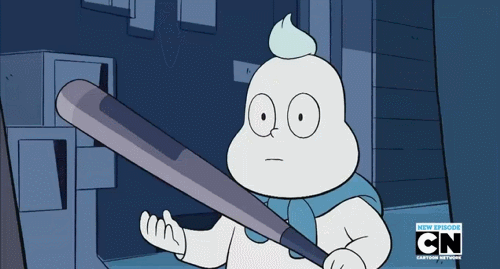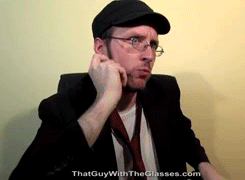Subject: Well, yes.
Author:
Posted on: 2016-04-28 21:55:00 UTC
Need some chocolate?
-Vee
Subject: Well, yes.
Author:
Posted on: 2016-04-28 21:55:00 UTC
Need some chocolate?
-Vee
A.K.A M^4
I am almost sure some of you folks know this, nonetheless it's incredible and deserves mentioning:
I'm sure most of you folks watched Mary Poppins, and know the famous Chimney Sweep song -> [CLICK]
It started where everything weird and awesome starts, on Tumblr! One of the YT comments under that clip was:
"If you write -2-2x= on a piece of paper, your pencil will make a sound similar to that song (...)"
And, of course, Tumblr picked it up and figured out the equasion behind the whole song!
- 2 - 2 x =
= x + 2 +
- 2 - 2 x =
= x + 2 +
= + 1 = + 1
- 7 2 + 7
= x + 2 +
= 2 + 2 1
= x + 2 +
- 2 - 2 x =
= x + 2 +
- 2 - 2 x =
= x + 2 +
- 2 - 2 x =
= x + 2 +
- 2 - 2 x =
= x + 2 +
- 7 2 + 7
= x + 2 +
- 7 2 + 7
= x + 2 +
= 7 7 2 +
= x + 2 +
= x - 7
- 2
- 2 - 2 x =
= x + 2 +
= x + 2 1
= x + 2 +
1 2 = x 1 =
Without line breaks
- 2 - 2 x = = x + 2 +
Standardized
- 2 - 2 x = x + 2
Subtract x
- 2 - 3 x = 2
Add 2
- 3 x = 4
Divide by -3
x = - 4 / 3,
Ta-da!
Then I got cocky and tried to do the whole first stanza, which, without line breaks, is
- 2 - 2 x = = x + 2 + - 2 - 2 x = = x + 2 + = + 1 = + 1
Which, standardized, is
- 2 - 2 x = x + 2 + (- 2) - 2 x = x + 2 = 1 = 1
Which simplifies to
- 2 - 2 x = - x = x + 2 = 1
Which I suspect isn't true. If - x = 1, x has to equal - 1, which works with x + 2 = 1, but not with - 2 - 2 x = 1. Ugh. Do we have any actual mathematicians, or anyone who's finished high school, who can tell me I'm wrong and there is a way to solve this?
--Key is working on her Plort character and so far has named her
P.S. Points to anyone who can figure out what the name is.
There does exist a way to make it all equal the same thing I believe, but it is quite confusing. The basis of it is something like this. In the real world we all assume that the figure '1' equates to one unit of something. What happens if '1' doesn't equate to one unit of something anymore and instead equates to zero units of something. Now much like in the way we can have multiple things represent the same number of units (sqrt(4)=2=8/4) in our new way of measuring things we can also have different figures representing the same quantities. So, we have, in a new style of counting that the figure '1' equates to zero units, and we can also have that the figure '0' equates to zero units. Now for our problem here let us say that the figure '2' equates to two units, the figure '-2' equate to minus two units, the figure '-1' to equate to zero units and the figure '0' equate to zero units, thus your equation does indeed make sense as it states that zero units is equal to zero units is equal to zero units is equal to zero units.
OR the simpler answer is there is no answer, or rather not in the conventional way of counting things that we automatically use as human beings. But because we do not state that we are using any particular set of numbers at the start we can assume that the figures we are dealing with can equate to whatever we want.
Storme Hawk
Resident mathematician.
P.S I believe that, without sacrificing any of the beats that the current equations produce when being written down, it is possible to replace some of the figures with other figures such that you do get four equations that can all equal one another. The simplest way of doing it would be to replace the first 2 with an integral sign, which would then allow for x=-1 to work.
I guess you can make your own rules in math.
--Key
P.S. The idea about replacing the beats sounds really fun. I'm going to go grab some of my real-life friends and force them to help me figure it out. (Unless you want to?)
and what information is given to you, what can be assumed etc. If you'd told me I could only use certain sets (so say all real numbers (any number that doesn't involve sqrt(-1) or its multiples), or all integers (all whole numbers)) then the way I worked it out couldn't work as it'd be restricted by a particular set of rules. It's one of the reasons I love maths, you can do whatever you want with it really.
As to replacing the beats, it sounds like a fun project but I'm way too busy at the moment to really do it, I'll probably be less busy (and a lot more worried) in about a month and half's time though, so I may try it then if I remember.
Storme Hawk
"Now as the ladder of life
Has been strung
You may think a sweep's
On the bottommost rung
Though I spends me time
In the ashes and smoke
In this 'ole wide world
There's no happier bloke"
All right. To me this means that things which out to seem small become large. To make it symmetrical, let's make the large small, too. Taking the reciprocal of everything might fulfill this, since it makes tiny fractions into huge numbers and visa versa. The main problem with that is that the original equation doesn't have any tiny fractions, so this won't be very dramatic/fun.
"When there's hardly no day
Nor hardly no night
There's things half in shadow
And halfway in light"
This implies to me that complex numbers ought to be involved. Definitely there's some ambiguity as to what is positive and what is negative. And complex numbers have that nicely; - 3 + 4 i, for example, is negative in the real direction and positive in the imaginary one.
But yeah, I also am way too busy at the moment to be doing this. After about three weeks I'll have plenty of time, though, so I can start it and you can join me later if it'll help you take your mind off of whatever's likely to be worrying you. If we remember, of course. Sound like a plan?
--Key
Gods, I love how nerdy and awesome Tumblr is sometimes :)
I'll give you mathematics in music...
https://www.ted.com/talks/scottrickardthebeautifulmathbehindtheugliestmusic
skip to 7:40 to find the most mathematically beautiful piece of music ever written, although I would recommend listening to the whole talk, the video is just under 10 minutes in length and uses mathematics no more complicated than prime numbers and multiplying by three.
The talk does explain why the piece of music is mathematically beautiful and to a normal ear horribly ugly
Storme Hawk
I don't get it
Also that "Magical Musical Mathematics" sounds like an E/A Magical Girl show.
You have been WARNED!
CAN I SERIOUSLY NOT MAKE A THREAD WITHOUT BEING BLOODY HIJACKED?!
You alright there?
-Vee

.
.
.
Can't you see?
Need some chocolate?
-Vee